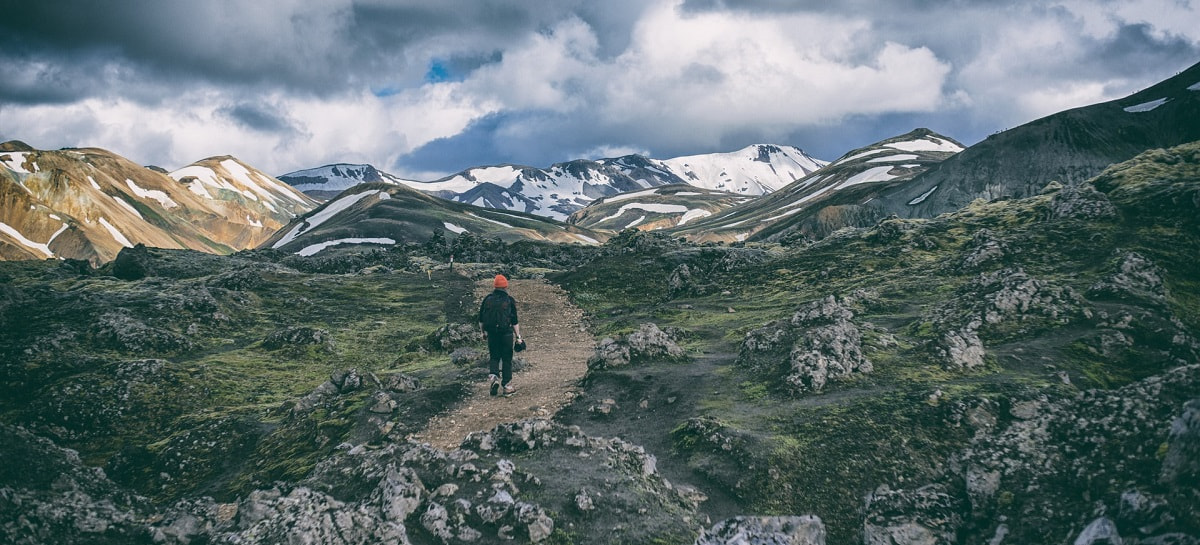There’s sort of a paradox when it comes to traveling. On one hand, you’re experiencing the boundless beauty of the earth. On the other, your transportation is actively hurting the same earth you’re enjoying.
The same goes for the food you pick up along the way and all of the plastic wrapping from your hotel toiletries. We’ll look at how to travel sustainably today, giving you ideas on ways to reduce your next holiday’s carbon footprint.
Traveling to new places should be a beautiful thing, so make note of some of the following ideas and see if you can make a difference! Let’s get started.

Want to Stay Inspired Each Day?
Sign up to Goodwall!
- Connect with like-minded people from 150+ countries
- Post accomplishments and get encouraging feedback
- Find support when you’re in a rut
Download the app now to get started for FREE!
1. Understand the Terms
There are dozens of environmental tourism buzzwords, all of which have slightly different definitions. If you’re looking into specific projects or activities that deal with different tourism efforts, it’s important to understand these terms.
The most prevalent are “ecotourism” and “regenerative travel.” Ecotourism refers to the process of visiting natural areas without leaving a negative footprint. This differs from sustainable tourism which deals with the general process of tourism and its global implications.
Regenerative travel is a subsection of ecotourism that addresses a style of travel that intends to benefit the areas a person visits. For example, you might take a trip to a natural park and work on reforestation projects with rangers.
2. Explore Natural Areas
Visiting natural areas is one great way to reduce your travel footprint. Rather than taking trips to cities or popular beach resorts, you can opt for a camping trip at a national park, for example.
The more you avoid big vacation conglomerates and corporations, the better. Generally speaking, these big companies have a vested interest in the sort of travel that harms the environment. Thousands of people taking planes, spending money in very specific areas, and failing to pick up after themselves are hallmarks of irresponsible travel.
The alternative is to visit a remote area, engage with the local shops and businesses, and leave the place in the same condition or better when you leave.
Related Read: 5 Careers That Allow You to Make Money as You Travel the World
3. Research Your Destination’s Sustainability Efforts
Sometimes, you can’t make a massive difference on your own, and that’s what we’ll address in this third of our sustainable travel tips. The systems in place are massive and it’s difficult to make an impact. The companies and areas you choose to support, though, are influential enough to make a difference.
You can support countries and areas that are working to reduce their environmental impact. There might even be tourism packages that focus specifically on sustainability.
By researching and putting your money in the right place, you add a little weight to the earth-friendly efforts in place.
4. Settle In
Another idea for sustainable travel is to pick a place and stay there for a while. Traveling sustainably is difficult when you’re constantly on the road, buying takeout, and dashing around the country without pausing.
All of that gas makes a real difference, plus you’re more likely to engage in harmful tourist practices. Picking a place and staying there reduces your need to waste gas or buy unhealthy foods.
You can learn about one place and find intelligent ways to distribute your money. Buy food from local markets, discover interesting local tour guides, pay to enter local museums, and more. The more you get to know a place, the more you can support it by engaging with the local culture.
Related Read: Travel Jobs: 11 Incredible Jobs That Allow You to Travel Around the World
5. Consider Cleaner Travel Options
Cars and planes are typically the worst ways to travel. Unless you’re cruising the countryside in a Tesla, you’re emitting a lot of carbon dioxide into the air.
Unfortunately, these are the most common methods of travel. There are typically other options available to you, though. For example, trains and buses dramatically reduce your carbon footprint when traveling almost any distance.
When you do need to fly or drive, however, the most environmentally-friendly option is the car. Even though the impact gets distributed among all passengers on a plane, your impact is still smaller if you drive.
This is true for long and short distances.
6. Avoid Single-Use Plastics
We’ve touched on this a little, but it’s true that single-use plastics are extremely damaging to wildlife and ecosystems. Plus, they’re extremely common when you’re on the road.
Think about it. Each time you swing by the gas station and get a snack, you’re using single-use plastics. The same goes for times you drive to a fast-food restaurant and pick something up quickly. Plastic bottles are obviously bad, but don’t forget about plastic bags of chips and other plastic waste you might pick up from a local market.
There are bags, napkins, wrappings, and containers to think about, but there’s also a lot of plastic we don’t see. Behind the scenes, much of the food at these restaurants is shipped in single-use plastic containers. To account for this, take a look at our next point; planning matters.
Related Read: Here Are 8 Great Reasons to Study Abroad in the United Kingdom
7. Pack Well
Packing and planning well are some of the most important eco-friendly travel actions that a sustainable traveler can take.
If you prepare, you don’t need to spend your time and money on things with a big environmental footprint. To reference our last point, food is a massive contributor to climate change, and the easy options we find on the road are some of the most damaging.
You can reduce your footprint by packing foods for the road and cooking your own meals while you’re vacationing. A few trips to the grocery store throughout your trip will be all you’ll need.
Another thing to note is that grocery stores are far cheaper than gas stations and fast food.
8. Be Smart With Clothing
Modern relationships with clothing are extremely damaging to the environment. Clothing production, transportation, and sales are massive drivers of Co2 levels.
Too many of us purchase clothing we won’t wear and don’t need. Further, a lot of that excess clothing comes from novelty shops and vacation spots. So, if you’re out in a tourism area, try not to purchase clothes you won’t wear.
There are plenty of other novelties you can purchase that are less harmful for the environment.
Related Read: How Does Air Pollution Affect the Environment?
9. Understand the Area
Tourists often enter new environments with very little notion of the local ecosystem. For example, they might pick interesting plants that are crucial for the area’s wildlife.
They might also walk on terrain that seems interesting, but is actually very delicate. These things take a real toll on different environments, especially when people repeat that behavior season after season.
If you’re going to spend time engaging with the wild, it’s wise to do some research first. You can even talk with a park ranger or local expert to see how you can be the most helpful. Who knows, you might want to ask them about starting an internship!
10. Go Off The Beaten Path
There are endless vacation destination and interesting trips hiding throughout the world. Most of them aren’t listed on travel sites.
There are ways to find interesting trips that aren’t top-ranked or extremely popular, though. When you find lesser-known destinations, you have a better chance of avoiding the concrete-laden tourist attractions that do so much damage to the environment.
Related Read: Point Source Pollution vs Nonpoint Source Pollution
11. Avoid Massive Vacation Companies
Vacationing companies streamline travel and take care of everything for you. It’s an easy alternative to the often stressful process of planning your trip. We get it!
That said, you give away all of your decision-making power when you put the process into the hands of the company. Their interests are in making the most money, and that often means organizing with other companies.
The environmental friendliness of these companies is usually questionable. The same goes for the company’s impact on small communities, what they’re doing to benefit their city, and how your dollars are getting used. If your goal is to travel sustainably, it’s always best to take a little extra time and plan your own trip.
You’ll find more interesting things to do and you’ll know that your money and energy are being spent in a way that’s healthy for the environment.
12. Use Common Sense
Many of us tend to “turn off” when we go on vacation. This isn’t always a bad thing, but it has it’s ups and downs.
Turning off and relaxing is an incredibly beneficial thing for people to do. There are myriad health benefits associated with the relaxation that comes with vacationing. On the other hand, letting go of all responsibility is something that too many of us do, to the detriment of local customs, cultural heritage, and even carbon emissions.
We have to remember that our actions affect the environment, even when we’re on vacation. That goes for our purchasing decisions as well as our actual physical choices. If you’re taking six separate flights over the course of your vacation to squeeze in as much action as possible, it might be time to step back and reconsider.
The point is that we lose perspective when we start thinking about vacations. Try to remember that there are plenty of sustainable travel options that are just as enjoyable as jetting around the world.
Related Read: How to Reduce Food Waste: 10 Simple Tips That Make a Difference
Want to Learn More About How to Travel Sustainably?
We hope our look at how to travel sustainably was useful to you. There’s a lot more to learn about eco-friendly travel, though.
Do your best to leave every place better than when you first arrived, and always respect the destination’s local cultural traditions, local economy, and local communities. Avoid harming native flora, wild animals, or the local community by minding your carbon footprint and practicing general sustainable tourism initiatives.
Explore the rest of our blog for more ideas on travel, sustainability, equality, and how to make an impact wherever you might go.



